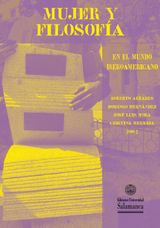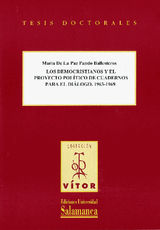
Urbanismo de Salamanca en el siglo XIX
Por Enrique GARC?A CATAL?N, MiguelÁngel Ortega Machín

| Formato: | PDF (Adobe DRM) |
| Disponibilidad: | Descarga inmediata |
Sinopsis
[ES] En el siglo XIX las ciudades europeas y españolas experimentaron una transformación notable. El paso del Antiguo al Nuevo Régimen tuvo una incidencia directa en la evolución del urbanismo. Salamanca, como capital de provincia, no fue ajena a esta realidad; sin embargo, su escaso desarrollo demográfico e industrial ralentizólos procesos de desarrollo urbano. El cambio de imagen de la ciudad comenzócon los efectos de la Guerra de la Independencia y las desamortizaciones posteriores, que provocaron la ruina de un número importante de edificios. El ascenso al poder de los gobiernos liberales impulsóuna avalancha de iniciativas encaminadas a dar a la ciudad un aspecto más acorde con el gusto y la mentalidad de la burguesía dominante. Las calles San Pablo y Rúa son un buen reflejo de la influencia que estos procesos tuvieron en las calles de Salamanca. Además de las transformaciones en la red viaria, a lo largo del siglo mejoraron las infraestructuras, como las de abastecimiento de agua, saneamiento o alumbrado. Los adelantos también se dejaron notar en los servicios y las dotaciones, con el levantamiento de un mercado, un cementerio, un matadero y un teatro. También mejorósensiblemente durante la segunda mitad de siglo la red de comunicaciones, con la construcción de carreteras modernas. La llegada del ferrocarril en 1877 supuso la mejora más sensible en este aspecto. [EN]: European and Spanish cities underwent a considerable transformation in the XIX century. The shift from the Old to New Regime had a direct effect on the evolution of urban planning. Salamanca, as capital of a province, was not out of touch with this reality; however, its low demographic and industrial development slowed down plans for urban expansion. The city's image began to change with the effects of the War of Independence, as well as the subsequent expropriation of land that caused a significant number of buildings to be knocked down. The rise to power of liberal governments sparked an avalanche of initiatives aimed at giving the city an appearance that was more in line with the taste and mentality of the bourgeoisie. Streets such as San Pedro and Rúa are a prime example of the influence that this process had on Salamanca's streets. In addition to changes in the city's roadways, other infrastructures such as city plumbing and the electric grid also improved significantly throughout the century. Advances in services and endowments were also quite noticeable with the building of a market, cemetery, slaughterhouse, and theatre. The city's connection to other areas also improved in the second half of the century with the construction of modern roads. The arrival of the railway in 1877 was the greatest improvement in this regard.
MiguelÁngel Ortega Machín
Datos del libro
- Editorial:
- UNIVERSIDAD DE SALAMANCA
- ISBN:
- 9788490124970
- Idioma:
- Español
- Tamaño:
- Kb
- Publicado:
- Diciembre 28, 2014
- Protección:
- Adobe DRM










